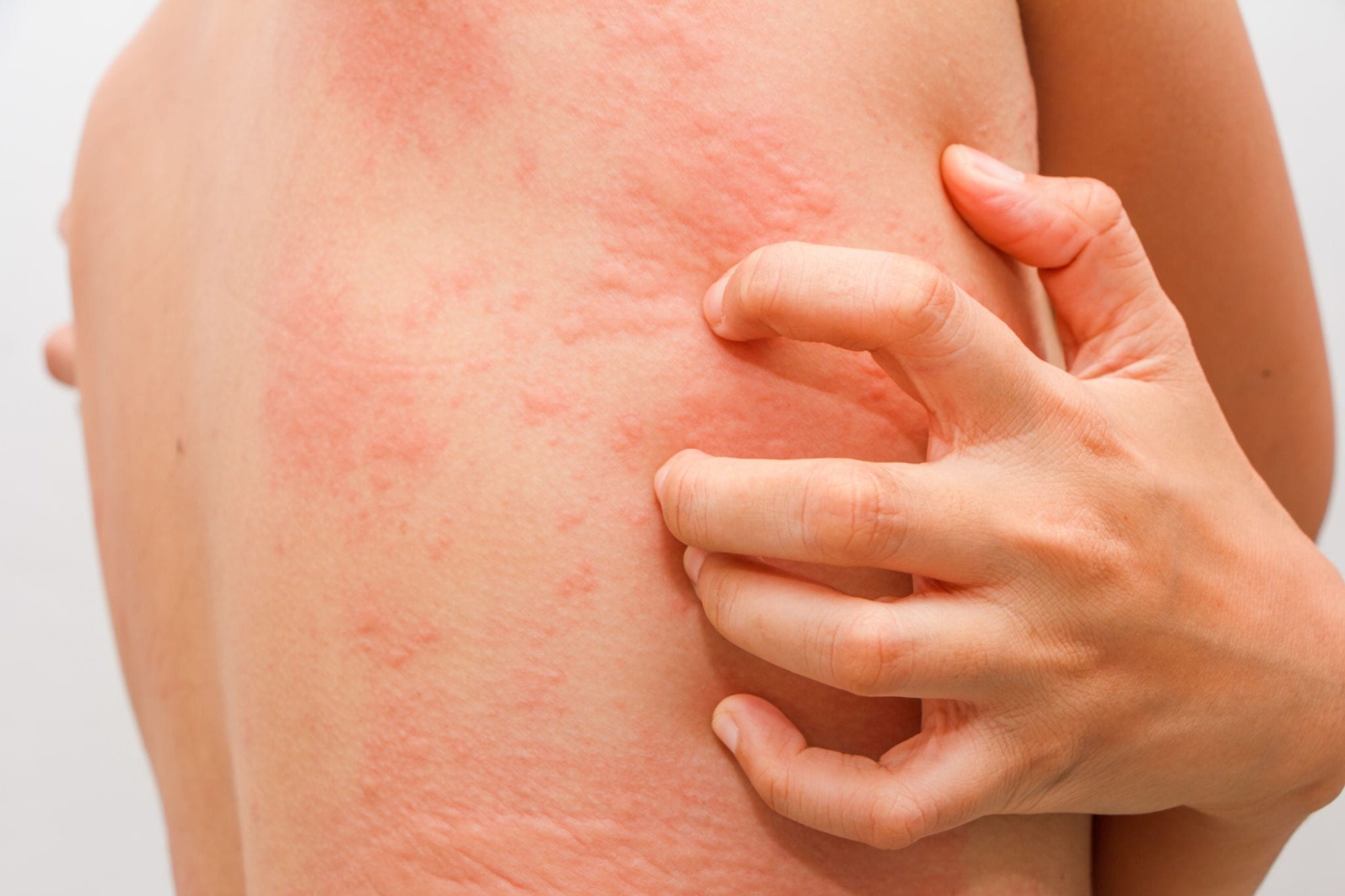
Mast Cell Activation Syndrome (MCAS) is a complex condition where mast cells, a type of white blood cell, overreact to various stimuli. This overreaction can lead to a wide range of symptoms affecting multiple body systems, including the skin, gastrointestinal tract, cardiovascular system, respiratory system, and nervous system. Common symptoms include flushing, headaches, diarrhea, and even severe allergic reactions. Despite its prevalence, MCAS often goes undiagnosed for years, leaving many sufferers without proper treatment. Understanding MCAS involves recognizing its symptoms, knowing the diagnostic criteria, and exploring treatment options. This article delves into 50 essential facts about MCAS to help you better understand this challenging condition.
Key Takeaways:
- Mast Cell Activation Syndrome (MCAS) is a condition where mast cells overreact, causing symptoms like flushing, hypotension, and neuropsychiatric manifestations. It's often underdiagnosed and affects around 17% of the population.
- Accurate diagnosis and treatment are crucial for managing MCAS effectively. Symptoms can mimic anaphylaxis, and treatment options include histamine blockers, aspirin therapy, and omalizumab.
What is Mast Cell Activation Syndrome?
Mast Cell Activation Syndrome (MCAS) is a condition where mast cells in the body react inappropriately to stimuli, causing a range of symptoms. These cells are part of the immune system and play a key role in allergic reactions and inflammation.
-
Definition and Overview: MCAS is characterized by an over-reaction or inappropriate reaction of mast cells to stimuli, which cannot be explained by any other disease.
-
Prevalence: The estimated prevalence of MCAS is around 17%, although it is often underdiagnosed and underreported.
Symptoms and Manifestations
MCAS can affect various systems in the body, leading to a wide array of symptoms. Understanding these can help in identifying and managing the condition.
-
Symptoms: Common symptoms include flushing, hypotension, urticaria, angioedema, headache, vomiting, diarrhea, and various neuropsychiatric manifestations.
-
Neuropsychiatric Manifestations: MCAS is associated with disorders like depression, generalized anxiety disorder, and panic disorder, often presenting with significant neuropsychiatric symptoms.
-
Autonomic Disorders: Many patients with MCAS also experience autonomic disorders, with postural orthostatic tachycardia syndrome (POTS) being the most common.
-
Hypermobile Ehlers-Danlos Syndrome: Some patients with MCAS also have hypermobile Ehlers-Danlos syndrome (hEDS), affecting connective tissue and leading to joint hypermobility.
Pathogenesis and Clinical Presentation
Understanding the underlying mechanisms and how MCAS presents clinically is crucial for diagnosis and treatment.
-
Pathogenesis: The pathogenesis involves aberrant mast cell reactivity due to mutations in the controller gene, leading to an augmented number of mast cells.
-
Clinical Presentation: MCAS is diagnosed based on clinical symptoms affecting multiple systems, including the skin, gastrointestinal, cardiovascular, respiratory, and neurological systems.
Diagnostic Criteria and Testing
Accurate diagnosis of MCAS involves specific criteria and tests to rule out other conditions.
-
Diagnosis Criteria: The criteria include the presence of anaphylactic symptoms, elevation of mast cell mediators during symptoms, and resolution of symptoms with appropriate treatment.
-
Testing for Clonal Disorders: Testing involves checking for mutations in the mast cell growth receptor KIT, specifically the KIT D816V mutation.
-
Bone Marrow Biopsy: A bone marrow biopsy and aspirate are indicated if the blood test for KIT D816V is positive, offering high sensitivity to find the mutation.
Treatment Options
Managing MCAS involves various treatments aimed at inhibiting or blocking mast cell mediators.
-
Treatment: Treatment includes histamine type 2 receptor blockers, aspirin, leukotriene blockers, corticosteroids, and omalizumab.
-
Omalizumab: This monoclonal antibody targets IgE, reducing its binding to mast cell receptors and significantly reducing mast cell reactivity.
Symptom Episodes and Epidemiology
MCAS often presents with episodic symptoms and is increasingly recognized in the medical community.
-
Symptom Episodes: Symptoms often occur in repeated episodes, mimicking anaphylaxis, characterized by hives, swelling, low blood pressure, difficulty breathing, and severe diarrhea.
-
Epidemiology: MCAS is rapidly increasing in frequency of diagnosis, affecting a significant portion of the population.
Mast Cell Functions and Abnormal Conditions
Mast cells have normal physiological roles, but in MCAS, their activation leads to various clinical symptoms.
-
Normal Physiological Functions: Mast cells are involved in homeostasis, tissue repair, angiogenesis, and immune system functions.
-
Abnormal Conditions: Abnormal conditions include primary activation, where mast cells release mediators spontaneously, and secondary activation, triggered by external stimuli.
Types of Mast Cell Activation
There are different types of mast cell activation, each with unique characteristics.
-
Primary Activation: This involves spontaneous production of mediators in clonal mast cell disorders due to mutations.
-
Secondary Activation: Triggered by external stimuli like medications, infections, insect or reptile venoms.
-
Mast Cell Activation in Health: Mast cells play a crucial role in maintaining normal physiological processes, but in MCAS, this process is unregulated.
Historical Context and Role in Allergic Reactions
The discovery and understanding of mast cells have evolved over time, shedding light on their role in allergic reactions.
-
History of Mast Cell Discovery: Mast cells were first identified in frogs in the mid-19th century, with their role in allergic reactions fully understood by 1989.
-
Role in Allergic Reactions: Mast cells cause allergic symptoms by releasing mediators when the allergy antibody IgE binds to allergens.
Types of Mast Cell Activation Disorders
MCAS can be classified into different types based on the underlying cause and mechanism.
-
Monoclonal (Primary): Involves mutations in the KIT gene or aberrant expression of CD25 or CD2, often linked to mastocytosis.
-
Polyclonal: Involves multiple mast cell clones, triggered by various factors.
-
Idiopathic: Diagnosed based on clinical symptoms without a clear cause.
Treatment Approaches
Various treatment options are available to manage MCAS symptoms effectively.
-
Histamine Blockers: Histamine type 2 receptor blockers like ranitidine or famotidine help with abdominal pain and nausea.
-
Aspirin Therapy: Aspirin blocks the production of prostaglandin D2, reducing symptoms like flushing.
-
Leukotriene Blockers: Montelukast and zafirlukast block the effects of leukotriene C4, reducing wheezing and abdominal cramping.
-
Corticosteroids: Helpful for edema, hives, and wheezing but should be used as a last resort due to potential side effects.
-
Omalizumab Therapy: Blocks binding of IgE to its receptors, reducing mast cell reactivity and anaphylactic episodes.
Diagnostic Procedures
Accurate diagnosis involves specific tests and procedures to confirm MCAS.
-
Bone Marrow Biopsy Indications: A bone marrow biopsy is indicated if the blood test for KIT D816V is positive, helping identify clonal mast cell disorders.
-
Evaluating Mast Cell Mediators: Mediators should be measured during acute episodes and at baseline to confirm the diagnosis.
-
Improvement with Treatment: Significant improvement in symptoms after treatment confirms the diagnosis of MCAS.
Comprehensive Evaluation
A thorough evaluation is necessary to diagnose MCAS accurately and rule out other conditions.
-
Clinical Relationship with Other Systems: MCAS affects multiple organ systems, making comprehensive evaluation essential.
-
Normal Physiological Functions of Mast Cells: Mast cells play a role in homeostasis, tissue repair, angiogenesis, and immune function.
-
Abnormal Conditions Involving Mast Cell Activation: Abnormal conditions include primary and secondary activation, leading to various clinical symptoms.
-
Primary Activation Mechanism: Involves spontaneous production of mediators in clonal mast cell disorders due to mutations.
-
Secondary Activation Mechanism: Triggered by external stimuli like medications, infections, insect or reptile venoms.
-
Mast Cell Activation in Health Context: Mast cells are crucial for normal physiological processes, but in MCAS, this process is unregulated.
Historical Context and Understanding
The discovery and understanding of mast cells have evolved, highlighting their role in allergic reactions.
-
History of Mast Cell Discovery and Understanding: Mast cells were first identified in frogs in the mid-19th century, with their role in allergic reactions fully understood by 1989.
-
Role of IgE in Allergic Reactions: IgE binds to allergens, triggering mast cell activation and degranulation, leading to allergic symptoms.
Types of Mast Cell Activation Disorders
MCAS can be classified into different types based on the underlying cause and mechanism.
-
Monoclonal Mast Cell Activation Syndrome Characteristics: Involves mutations in the KIT gene or aberrant expression of CD25 or CD2, often linked to mastocytosis.
-
Polyclonal Mast Cell Activation Characteristics: Involves multiple mast cell clones, triggered by various factors.
-
Idiopathic Mast Cell Activation Characteristics: Diagnosed based on clinical symptoms without a clear cause.
Importance of Comprehensive Diagnosis
Accurate diagnosis and treatment are crucial for managing MCAS effectively.
-
Comprehensive Diagnosis: Involves clinical history, physical examination, laboratory tests, and sometimes imaging studies to rule out other conditions.
-
Evaluating Mast Cell Mediators: Mediators should be measured during acute episodes and at baseline to confirm the diagnosis.
-
Improvement with Treatment: Significant improvement in symptoms after treatment confirms the diagnosis of MCAS.
-
Bone Marrow Biopsy Indications: A bone marrow biopsy is indicated if the blood test for KIT D816V is positive, helping identify clonal mast cell disorders.
-
Histamine Blockers: Histamine type 2 receptor blockers like ranitidine or famotidine help with abdominal pain and nausea.
-
Omalizumab Therapy: Blocks binding of IgE to its receptors, reducing mast cell reactivity and anaphylactic episodes.
Understanding MCAS: Key Takeaways
Mast Cell Activation Syndrome (MCAS) is a complex condition affecting multiple body systems. It often goes underdiagnosed, leading to prolonged suffering. Recognizing symptoms like flushing, hypotension, and neuropsychiatric issues is crucial. MCAS can coexist with conditions like hypermobile Ehlers-Danlos syndrome and postural orthostatic tachycardia syndrome. Diagnosis involves identifying anaphylactic symptoms, elevated mast cell mediators, and ruling out clonal disorders. Treatments include histamine blockers, aspirin, leukotriene blockers, corticosteroids, and omalizumab. Comprehensive evaluation and appropriate treatment can significantly improve quality of life for those affected. Understanding MCAS helps in managing this challenging syndrome effectively.
Frequently Asked Questions
Was this page helpful?
Our commitment to delivering trustworthy and engaging content is at the heart of what we do. Each fact on our site is contributed by real users like you, bringing a wealth of diverse insights and information. To ensure the highest standards of accuracy and reliability, our dedicated editors meticulously review each submission. This process guarantees that the facts we share are not only fascinating but also credible. Trust in our commitment to quality and authenticity as you explore and learn with us.


